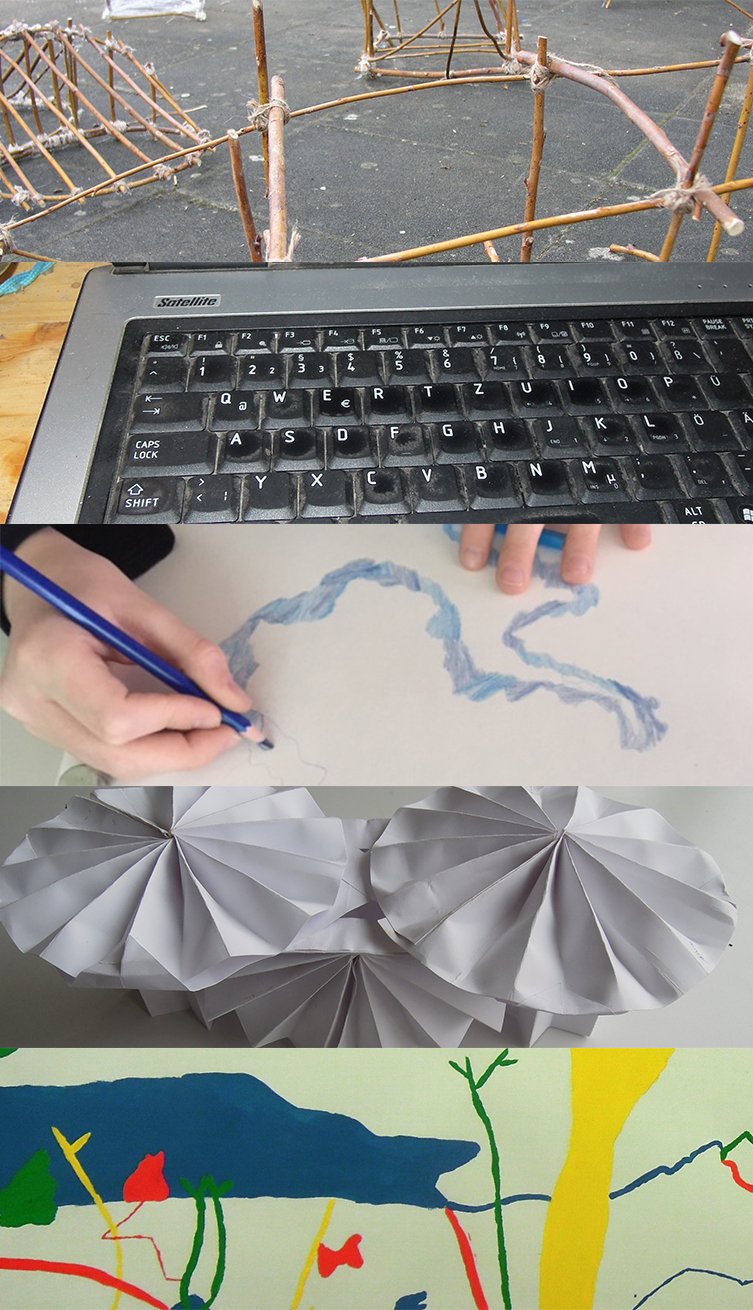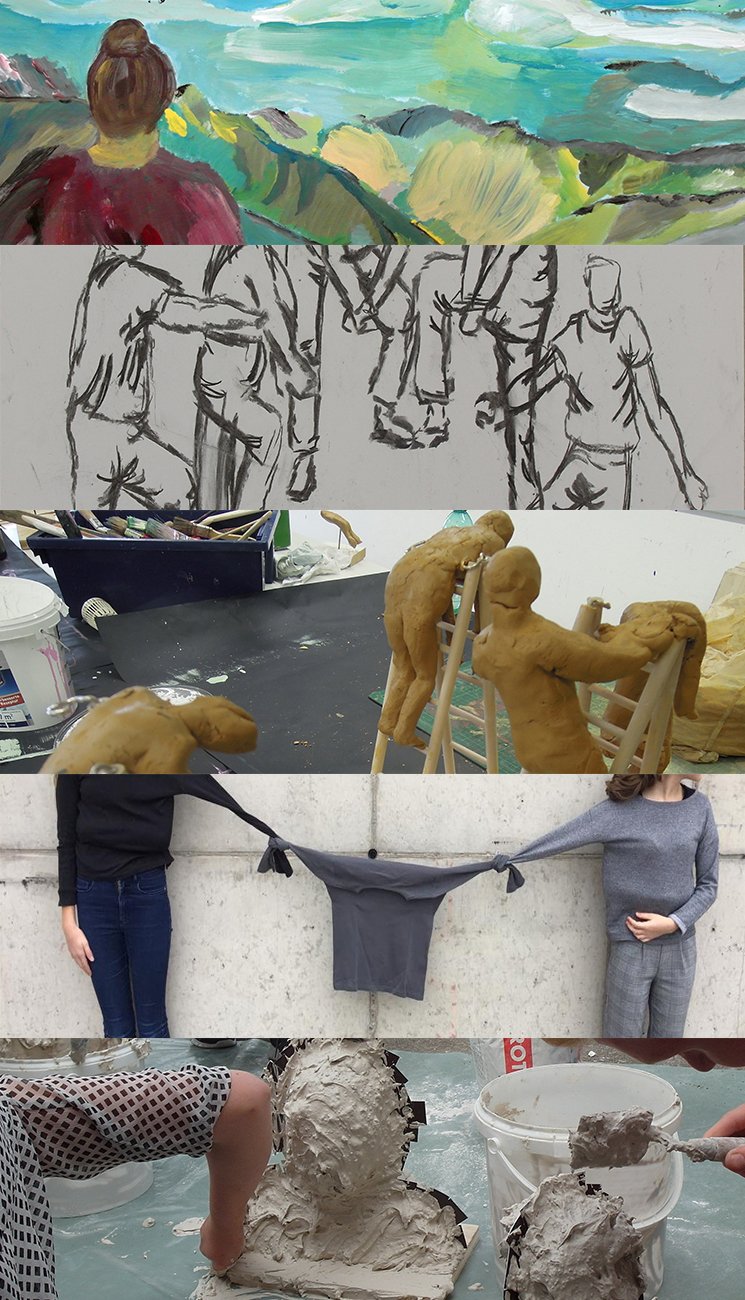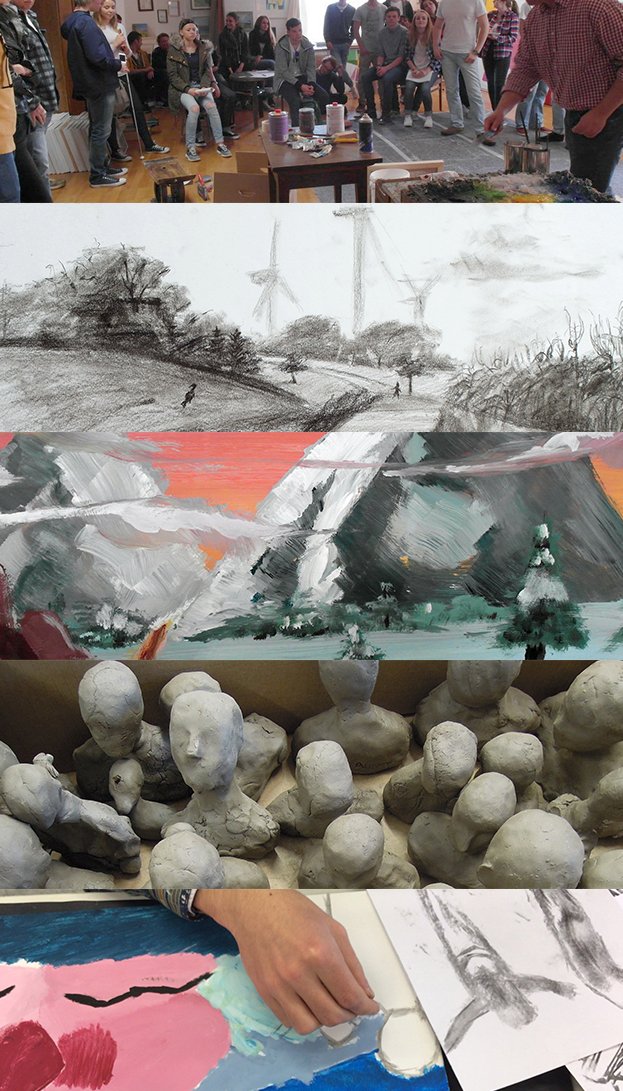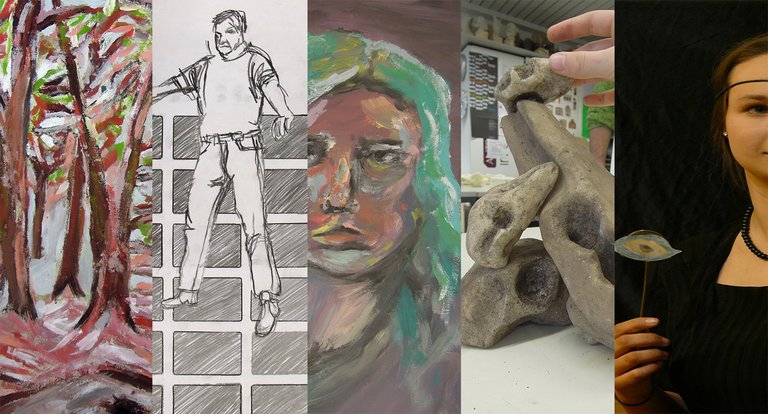The art profile at the Schloss-Schule Kirchberg
How is the art profile organized?
Grades 5 – 7:
Trying out different artistic areas beyond art lessons: pottery, wood technology, cooking, theatre group, music group
Grades 8 – 10:
Profile as a transfer-relevant core subject with 5 hours, of which 4 hours BK and 1 hour theater.
Grades 11-12:
For the upper school, students can choose fine arts as a 5-hour advanced course or a 2-hour basic course.
Requirements:
- Enthusiasm for art
- Desire to work creatively
- Interest in theoretical and art historical content
Here you can gain insights into the works of our students .

Contribution to personality development
The subject of visual arts combines "head, heart and hand" in a unique way, thus networking rational, logical thinking with intuitive, emotional, pictorial thinking. In addition to the visual skills, this also promotes communicative and social skills in the pupils and thus contributes to a comprehensive personality development .
Cultural education – without culture is a society without a soul
Art, theatre, music, literature are expressions of the deeper self-understanding of societies, as they deal with the elementary fundamental questions of human existence . They are the memory of humanity, without which our culture is like a tree without roots.
Art history is intellectual history and therefore closely linked to history, religion, philosophy and social issues. Cultural education enables an open view of the world and society beyond its political and economic orientation. Cultural education focuses on the richness and diversity of life, beyond the purely usable and measurable.



Fostering creativity
The art profile promotes creativity: Being creative is a basic human need and is becoming increasingly important for the future of our society. "The future must be constantly reinvented." (Picasso).
We promote methods of playful, experimental, inventive, creative work through a wide range of artistic materials, techniques, tasks.
Art lessons promote one's own activity in an environment that is increasingly shaped by the prefabricated foreign experience through the media and in which young people are becoming more and more passive. Drastic sensory overload in our society increasingly leads to blunting of the senses and experience. Art lessons promote learning processes through projects that enable students to experience autonomy, individuality, personal responsibility .
The art profile develops the creative ability: The need to create something is innate in all people, it is an important element of personal appropriation of the world. But our environment and society offer fewer and fewer opportunities for this. The creative ability is promoted in two directions.
On the one hand, the ability to depict: The focus here is on illusionistic modes of representation – e.B. spatial and body representation, nature drawing, learning of representation techniques.
On the other hand, the free expression: This is a basic element of self-awareness as an independent personality.
Art lessons make an important contribution to dealing with modern media. It provides insight into the handling of imaging techniques and digital communication. In doing so, it also promotes a responsible, media-critical awareness and contributes comprehensively to general media education .

Theatre – minor subject of the art profile

The approaches of the profile subject Art are extended and deepened by the subject Of Theatre: Like no other pedagogical field, it offers space for social learning in order to discover and develop individual strengths. Closely intertwined with almost all school disciplines as well as social, cultural and professional areas of life, this opens up a multidimensional world of learning and experience.
The central design categories body, space and time build bridges to subject-specific competences as taught in sports, music and art: getting to know the body and movement possibilities; Trying out rhythm, melody and effect of musical elements; Designing the relationships between body and space or static and moving images. Theatre is a cultural and social event in front of, on and behind the stage: working in a group trains empathy and social skills. The possibilities of texts and their possibilities of meaning are experienced. The diverse professional world in the field of theatre, film and media also broadens perspectives far beyond school.
In addition to aesthetic categories, the understanding of room and stage design includes a wide variety of technical and scientific aspects such as e.B. light, sound but also direction. Role work enables access to unknown, invented and experienced worlds of experience. Reflection and feedback culture play an important role here.
The art profile offers insights into a wide creative professional field
The choice of the art profile not only offers more time for creativity, but also provides insights into a wide professional field of design professions from the various design professions to architecture or cultural management. Very important is also the time for museum visits, studio visits, artist talks or excursions to art academies and universities of applied sciences for design. In addition, basics are taught that are required for all professions whose forms of work require skills such as independence, initiative, project planning, team skills, security and knowledge in dealing with the media and the Internet .
The art profile promotes the development of a holistic, independent, open personality no matter what the student wants to do professionally later. Art teaching is active formmaking, is an invention of the future, to give things a meaning, not just to discover their meaning.

Thus, art lessons become the moment of truth , because everything that man visibly creates is a constituent element of his essence and not just any ingredient.
Learning a wide range of skills
